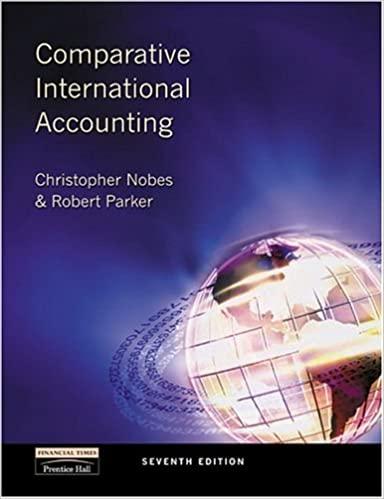Question
On January 1, 2016, Plymouth Corporation acquired 80 percent of the outstanding voting stock of Sander Company in exchange for $1,200,000 cash. At that time,
On January 1, 2016, Plymouth Corporation acquired 80 percent of the outstanding voting stock of Sander Company in exchange for $1,200,000 cash. At that time, although Sanders book value was $925,000, Plymouth assessed Sanders total business fair value at $1,500,000. Since that time, Sander has neither issued nor reacquired any shares of its own stock. The book values of Sanders individual assets and liabilities approximated their acquisition-date fair values except for the patent account, which was undervalued by $350,000. The undervalued patents had a five-year remaining life at the acquisition date. Any remaining excess fair value was attributed to goodwill. No goodwill impairments have occurred. Sander regularly sells inventory to Plymouth. Below are details of the intra-entity inventory sales for the past three years: Separate financial statements for these two companies as of December 31, 2018, follow: Plymouth Sander Revenues $(1,740,000) $(950,000) Cost of goods sold 820,000 500,000 Depreciation expense 104,000 85,000 Amortization expense 220,000 120,000 Interest expense 20,000 15,000 Equity in earnings of Sander (124,000) 0 Net income $ (700,000) $(230,000) page 256 Retained earnings 1/1/18 $(2,800,000) $(345,000) Net income (700,000) (230,000) Dividends declared 200,000 25,000 Retained earnings, 12/31/18 $(3,300,000) $ (550,000) Cash $535,000 $115,000 Accounts receivable 575,000 215,000 Inventory 990,000 800,000 Investment in Sander 1,420,000 0 Buildings and equipment 1,025,000 863,000 Patents 950,000 107,000 Total assets $ 5,495,000 $2,100,000 Accounts payable $(450,000) $(200,000) Notes payable (545,000) (450,000) Common stock (900,000) (800,000) Additional paid-in capital (300,000) (100,000) Retained earnings, 12/31/18 (3,300,000) (550,000) Total liabilities and stockholders equity $(5,495,000) $(2,100,000) Prepare a schedule that calculates the Equity in Earnings of Sander account balance. Prepare a worksheet to arrive at consolidated figures for external reporting purposes. At year-end, there are no intra-entity payables or receivables. LO 5-2, 5-3, 5-4, 5-5, 5-7 On January 1, 2016, Monica Company acquired 70 percent of Young Companys outstanding common stock for $665,000. The fair value of the noncontrolling interest at the acquisition date was $285,000. Young reported stockholders equity accounts on that date as follows: Common stock$10 par value $300,000 Additional paid-in capital 90,000 Retained earnings 410,000 In establishing the acquisition value, Monica appraised Youngs assets and ascertained that the accounting records undervalued a building (with a five-year remaining life) by $50,000. Any remaining excess acquisition-date fair value was allocated to a franchise agreement to be amortized over 10 years. During the subsequent years, Young sold Monica inventory at a 30 percent gross profit rate. Monica consistently resold this merchandise in the year of acquisition or in the period immediately following. Transfers for the three years after this business combination was created amounted to the following: Year Transfer Price Inventory Remaining at Year-End (at transfer price) 2016 $60,000 $10,000 2017 80,000 12,000 2018 90,000 18,000 In addition, Monica sold Young several pieces of fully depreciated equipment on January 1, 2017, for $36,000. The equipment had originally cost Monica $50,000. Young plans to depreciate these assets over a six-year period. In 2018, Young earns a net income of $160,000 and declares and pays $50,000 in cash dividends. These figures increase the subsidiarys Retained Earnings to a $740,000 balance at the end of 2018. During this same year, Monica reported dividend income of $35,000 and an investment account containing the initial value balance of $665,000. No changes in Youngs common stock accounts have occurred since Monicas acquisition. Prepare the 2018 consolidation worksheet entries for Monica and Young. In addition, compute the net income attributable to the noncontrolling interest for 2018.
Step by Step Solution
There are 3 Steps involved in it
Step: 1

Get Instant Access to Expert-Tailored Solutions
See step-by-step solutions with expert insights and AI powered tools for academic success
Step: 2

Step: 3

Ace Your Homework with AI
Get the answers you need in no time with our AI-driven, step-by-step assistance
Get Started


